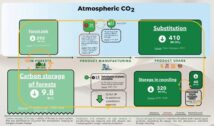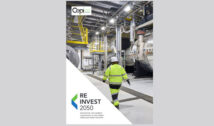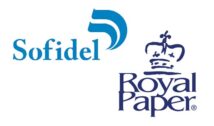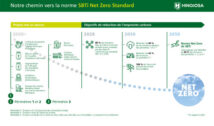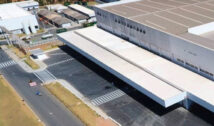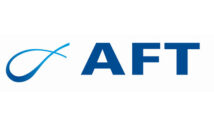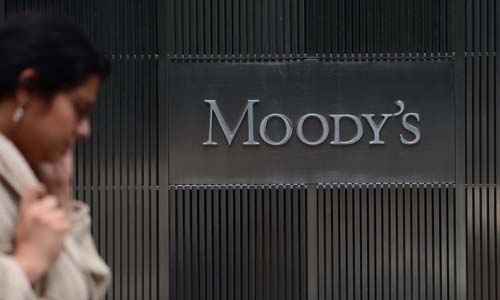
The outlook for the global paper, packaging and forest products industry remains positive, Moody’s Investors Service said today. The continuing positive outlook for the industry is underpinned by expectations that the consolidated operating earnings of the 41 paper and forest product companies rated by Moody’s globally will increase by 8%-10% over the next 12 months.
By region, Moody’s says that the consolidated operating earnings from rated producers in North America and Europe is anticipated to increase 5%-7% in both regions, as that of rated producers in Latin America is expected to surge by 25%-30% over the outlook period. Latin America’s significant pulp and paper rebound is driven mainly by a spike in bleached eucalyptus (BEK) pulp prices following near trough levels in 2020. As well, domestic demand will benefit from the Brazilian economy growing by 3.3% in 2021 and by 2.6% in 2022, after a 4.7% contraction in 2020.
“Increasing demand, aided by a rebound in economic activity and higher prices, will drive earnings growth in all subsectors, led by market pulp,” according to Ed Sustar, a Moody’s Senior Vice President.
Meanwhile, the outlook for the timber and wood products subsector has changed to positive from stable, with average prices for most wood products, including lumber, plywood and oriented strandboard (OSB) increasing in 2021 to peak levels due to limited new supply, stronger demand from increasing US housing starts and strong renovation and remodeling activity.
The outlook change for the timber and wood products subsector is buoyed by positive long-term industry fundamentals, including several years of under-building, the restoration of household formations trends, significant housing stock that in need of remodeling or repair and relatively low mortgage rates. Moody’s analysts expect wood product and sawlog demand to increase as US housing starts grow to over 1.45 million units in 2021, and renovation and remodeling activity remains strong. Sustar cautions, however, that offsetting these favorable trends are uncertain consumer sentiment, weaker home buyer job certainty, skilled home building labor shortages and high home prices.
Similarly, the outlook for the paper packaging and tissue subsector has turned positive from stable, with EBITDA growth driven by higher corrugated and consumer paper packaging prices. Demand is expected to remain strong in 2021 as consumers continue to buy online, with shipping items individually to consumer homes, rather than in bulk to retail outlets, requiring more protective packaging. Additionally, demand will continue to be fueled by paper packaging alternatives to single use plastic packaging. Nevertheless, Moody’s says demand for tissue products will normalize in 2021 after spiking last year due to panic buying at the outset of the pandemic. Accordingly, tissue earnings will decline slightly, as new tissue capacity limits price increases and consumer purchasing behavior that lifted demand in early 2020 at the start of the coronavirus outbreak subsides.
For its part, Moody’s outlook for the market pulp subsector remains positive, with operating earnings of the eight rated pulp products companies increasing more than 25% over the next 12 months. Prices for most grades of pulp are anticipated to increase significantly in 2021, with average BEK prices up 40% in 2021 versus 2020. Northern bleached softwood kraft (NBSK) pulp prices have also spiked, and Moody’s analysts project that average NBSK pulp prices in 2021 will be about 20% higher than average 2020 levels. A combination of stronger demand from China, a weaker US dollar, significant industry outages in late 2020, lack of new supply in 2021 and increased speculative activity in pulp futures has led to the recent spike in pulp prices across most market pulp grades. Further buoying pulp prices is the increased demand for personal hygiene products as higher hygiene standards adopted during the pandemic remain in place, as well as higher demand for at-home tissue products, which use more virgin fiber. Longer term, additional pulp demand may be driven by the replacement of air-hand dryers, which circulate airborne viruses, with paper towels.
Meanwhile, the outlook for the commodity and specialty paper subsector remains stable, with EBITDA growth driven by a demand rebound for some commodity paper grades from the reopening of schools and offices. Even so, demand for North American, European and Latin American commodity grades of paper will remain relatively flat this year as school and office re-openings offset ongoing secular demand declines. As a result, for the 10 rated companies primarily driven by their printing and writing paper operations, operating earnings are expected to grow only about 2% over the next 12 months. And while specialty paper producers will benefit from increased demand for hygiene products like specialty wipes, as well as ongoing paper-based alternatives replacing single-use plastic, Moody’s says secular demand declines for most grades of commodity paper are expected to resume in 2022, as consumers continue to turn to digital substitutes like electronic storage and e-books.




